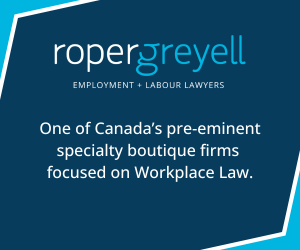Making a Case to Management: Why Building a Culture of Wellness is a Win-Win for Employees and Employers
HR professionals do their best as facilitators in helping employers realize the importance of addressing employees’ mental and physical health issues arising from the workplace. However, it can often be an uphill battle for HR to convince upper management to invest in employee wellness.
You’re likely to come across someone in your social circle or someone you know in need of extended sick leave due to deteriorating mental health or developing serious health issues stemming from workplace stress. According to a national survey of 2,000 working Canadians by Abacus Data, work is a common source of mental health distress for 1 in 3 workers, accounting for about 6.5 million Canadians. This includes burnout, anxiety, nervousness, depression, and anger. The encouraging news is that companies have the power to proactively support their employees’ well-being to prevent these issues from happening.
On average, mental health issues cost businesses almost $1,500 per employee, per year. Disregarding this matter ultimately negatively affects the bottom line.
It can result in a cycle of employee dissatisfaction, prolonged sick leaves, and decreased productivity. In the worst case, the company would have to spend even more money rehiring and retraining staff from consistently high employee turnover. According to Gallup, “15% to 20% of total payroll in voluntary turnover costs, on average, are due to burnout.”
These statistics make the point very clear—employee wellness matters. If employers take their workers for granted, the company is hurt by it in the long run.
The ROI on Employee Wellness Programs
Implementing workplace wellness programs that promote employees’ physical and mental health is optional, but organizations can reap tremendous benefits. Prioritizing mental health and well-being in the workplace is mutually beneficial for both employees and employers. Employees who are happy and healthy are better workers and employers do financially better because of it. It is a win-win situation to build a culture of wellness.
One research study from Harvard found that medical costs decrease by about $3.27 for every dollar spent on wellness programs, while absenteeism costs fall by about $2.73 for every dollar spent.
Based on a well-being survey of more than 2,000 HR leaders across 11 countries:
- 78% of HR leaders have seen a cost reduction in healthcare
- 85% of HR leaders saw a reduction in talent management cost
- 90% of companies tracking ROI see positive wellness return
Now, more than ever, it is crucial to build a corporate culture of wellness. The effects of the pandemic are still felt in workplaces—from the dreaded return-to-office (RTO) mandates to quiet quitting, or employees finding work elsewhere because they feel unheard and have had enough. Providing workers with the right tools and resources will help improve their well-being while providing financial benefits for your organization, as well as retaining and attracting more talent.
How to Build A Culture of Wellness
Fostering a culture of wellness goes beyond simply implementing wellness programs. Instead, the importance of employees’ well-being must become an integral component of the organization’s identity. It starts at the top. Physical, mental, and emotional health are valued, supported, and promoted. Amidst our busy schedules, it’s easy to lose sight of this crucial aspect: employees are the heart of any organization. Employers need to show they truly care about their employees; not just through words but by their actions. It is about creating a work culture that fosters engagement, personal growth, recognition, wellness, collaboration, and team bonding. Provide them with the necessary tools to excel. Ultimately, it’s about creating a positive work environment where they feel valued, connected, and motivated to contribute their best.
By following these steps and actively involving employees in the process, organizations can identify and implement wellness programs that support a culture of wellness and contribute to a healthier, happier, and more engaged workforce.
1. Understand Employees’ Needs:
It is important your employees feel heard and engaged in wellness initiatives. Conducting surveys or having conversations to understand their preferences and areas of concern is a great way to start listening to how your company can help employees. Workers are encouraged to voice their feedback and suggestions on what wellness programs they want to see implemented in the workplace. Tailor your wellness programs to support them. One way is to set up Employee Resource Groups (ERGs) where employees have a safe space to voice their opinions. ERGs are voluntary, employee-led groups based on shared identities, communities, and interests. It’s a great way for employees to be seen, heard, and supported by their employers.
2. Holistic Approach:
Wellness includes physical, mental, and emotional health. Implement holistic wellness initiatives that address various aspects of well-being. Certain wellness programs, such as fitness classes and massages at work, yield immediate benefits for employees. Meanwhile, initiatives like mental health assistance, stress management, nutrition education, and mindfulness activities offer sustained support in the long run.
3. Lead by Example:
Actions speak louder than words. Senior management and managers should genuinely promote and participate in wellness initiatives to create a supportive work culture. Managers need to be given the tools and training to help them better support their staff. Employees need to feel comfortable to participate in these activities. If you are providing ERGs, ensure that these safe spaces are run by non-executive employees and yet ensure upper management support. These groups are to be company-supported and employee-operated.
4. Flexibility and Accessibility:
It is important to provide flexible options for employees to participate in wellness activities, taking into account different schedules and preferences. Offering both in-person and virtual resources should be considered to ensure accessibility for all employees, including remote workers.
5. Open Communication:
Once employees participate in wellness activities, see what works or does not work for them so your company can adjust accordingly. Their feedback and suggestions will continuously improve the program. Encourage your staff to speak up, assuring them that their opinions won’t impact their job performance review. Remember to express gratitude to your team regularly to foster an environment of open communication and honest feedback.
Seeing Results
Establishing metrics to measure and assess the effectiveness of wellness programs will help prove that the efforts are worth it. Key performance indicators to monitor include employee participation, absenteeism rates, employee turnover rates, healthcare costs, and productivity levels.
It’s also important to gauge qualitative results. Wellness programs can boost company morale, increase employee engagement, reduce worker’s stress and anxiety levels, and improve work quality. Encourage employees to share their personal success stories about how participating in the wellness program has impacted their lives. They can provide powerful examples of the program’s effectiveness and inspire others to get involved.
Employees lead busy lives; juggling work and personal commitments, while living within a loneliness epidemic, as designated by the World Health Organization. People often struggle to find time for self-care and ways to improve their well-being outside of work. Demonstrate your company’s gratitude by putting them first. When employees see that management is deeply invested in employee wellness, they are more likely to be much more dedicated to their work. When your employees do well, your organization thrives.
Michelle Rene Divecha is the Founder of Soulful Indulgence, delivering eco-friendly mobile spa and wellness services since 2006. With 25 years of experience as a certified esthetician, she is passionate about employee well-being and making wellness accessible in the workplace. Michelle advocates for natural wellness and a connection with nature. She loves sharing her wealth of knowledge to help organizations best support the well-being of their teams, as well as teach people how to nourish, ground, and revitalize the body, mind, and spirit. Michelle and her team will be participating once again at this year’s CPHR BC & Yukon’s 61st annual HR Conference & Expo on April 30 – May 1, providing complimentary mobile chair massages to attendees at the signature Wellness Lounge, sponsored by UKG.
For the latest HR and business articles, check out our main page.









